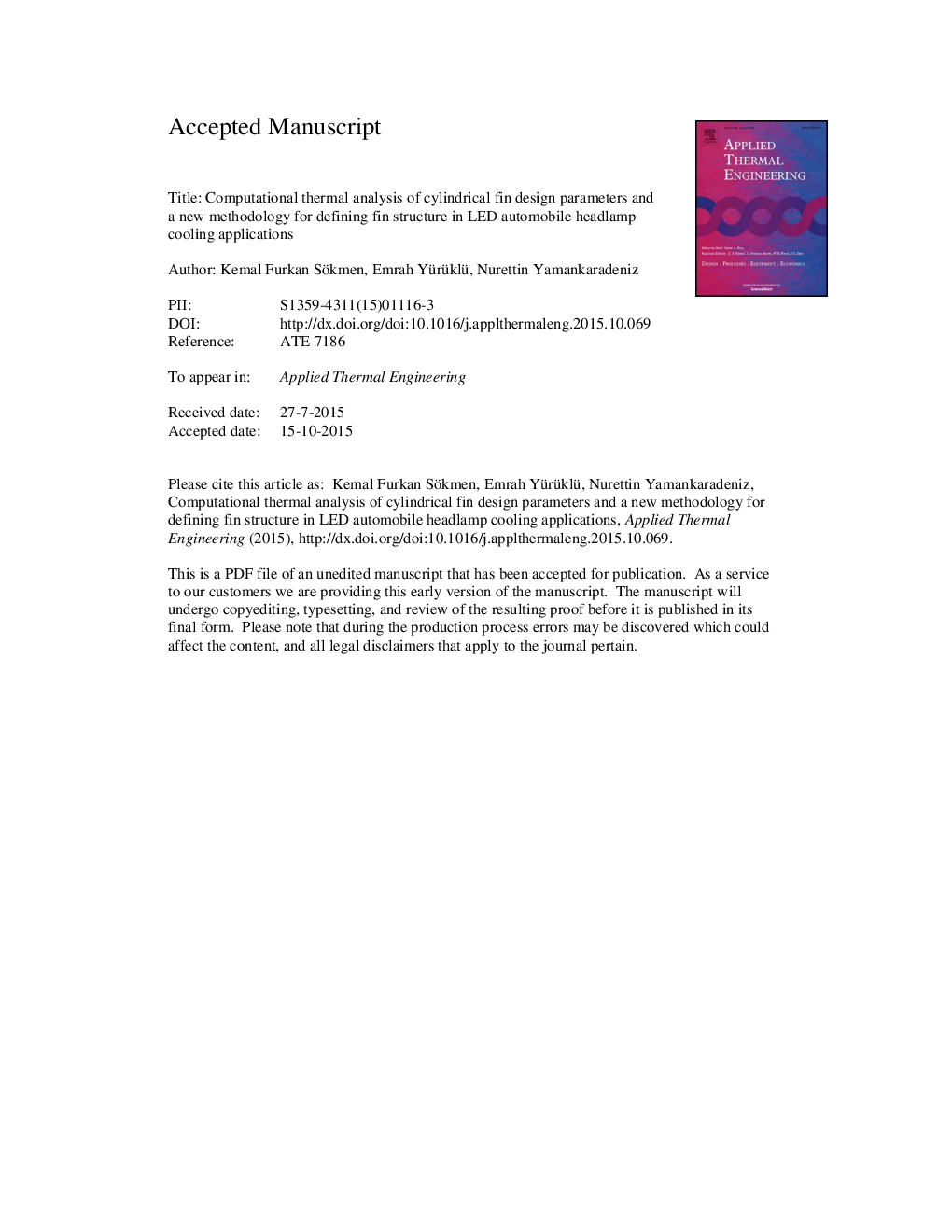| Article ID | Journal | Published Year | Pages | File Type |
|---|---|---|---|---|
| 644808 | Applied Thermal Engineering | 2016 | 22 Pages |
Abstract
In this study, the effects of fin design, fin material, and free and forced convection on junction temperature in automotive headlamp cooling applications of LED lights are researched by using ANSYS CFX 14 software. Furthermore a new methodology is presented for defining the optimum cylindrical fin structure within the given limits. For measuring the performance of methodology, analyses are carried out for various ambient temperatures (25â°C, 50â°C and 80â°C) and different LED power dissipations (0.5âW, 0.75âW, 1âW and 1.25âW). Then, analyses are repeated at different heat transfer coefficients and different fin materials in order to calculate LED junction temperature in order to see if the fin structure proposed by the methodology is appropriate for staying below the given safety temperature limit. As a result, the suggested method has always proposed proper fin structures with optimum characteristics for given LED designs. As another result, for safe junction temperature ranges, it is seen that for all LED power dissipations, adding aluminum or copper plate behind the printed circuit board at low ambient temperatures is sufficient. Also, as the ambient temperature increases, especially in high powered LED lights, addition of aluminum is not sufficient and fin usage becomes essential. High heat transfer coefficient and using copper fin affect the junction temperature positively.
Related Topics
Physical Sciences and Engineering
Chemical Engineering
Fluid Flow and Transfer Processes
Authors
Kemal Furkan Sökmen, Emrah Yürüklü, Nurettin Yamankaradeniz,
